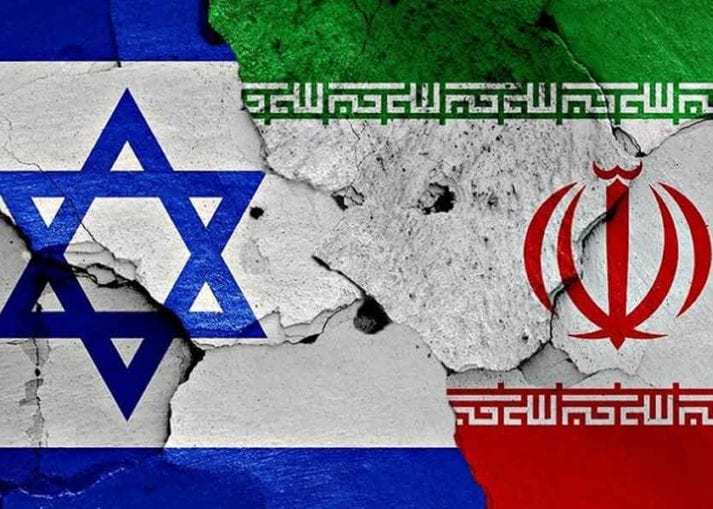By Jonathan Marcus, BBC
These are the first skirmishes in a potential war between Israel and Iran that promises a fearful level of destruction – even by the standards of the modern Middle East.
It could spread across Syria and Lebanon. Israeli cities would be hit, as might strategic targets in Iran. In its initial stages, it would be Israeli air power against the long-range missile forces of Iran and its Lebanese ally Hezbollah.
It is a conflict that needs to be averted and the time to do it is now. However Israel and Iran remain on a collision course.
Israel has long been wary of Iran’s growing influence in the region.
A low-level struggle has been under way for years in which the Israelis have sought to prevent sophisticated Iranian weaponry, such as long-range and anti-shipping missiles, being passed by Iran to Hezbollah in Lebanon. Convoys have been intercepted and weapons stores bombed.
But the war in Syria has greatly increased the proximity of Iranian-backed forces to Israel’s borders.
In addition to its ally Hezbollah, a variety of Iranian militias have been active in the fighting, along with officers and advisers from the Revolutionary Guard Corps.
Iran’s strong support for the government of President Bashar al-Assad – along with Russian air power – ensured his survival and now Tehran is seeking to cash in on the strategic benefits.
Iran is resolutely opposed to the Jewish state and has long backed a variety of radical groups intent on its destruction.
But the Syrian war has given Tehran the possibility of opening up an additional direct front against Israel on its northern border. Over recent months, the Israelis say, a variety of Iranian installations have been established in Syria: weapons stores, barracks, air defences and so on.
The immediate tensions stem from an Israeli air strike on what they claimed was an Iranian drone facility at the so-called T-4 air base, near Palmyra, on 9 April, which reportedly killed several Iranian military advisers.
Iran vowed to respond and since then there have been sporadic incidents that appear to be Israeli efforts to thwart just such a response.
There was an Israel Defense Forces (IDF) air strike on an underground missile depot where the explosion was so large it registered on earthquake-monitoring systems. And just a few days ago, Israel claimed it struck at missiles that were being readied to be launched.
But last night the Iranians actually appear to have got off their shots – firing some 20 rockets at Israeli military positions on the Golan Heights.
Israel says it destroyed the launcher from which these were fired. But it then went on to strike at most, if not all, of the Iranian installations it knows about in Syria. The intent: both to set back the development of Iran’s military infrastructure in the country, but also clearly to send a powerful signal to Tehran.
In the short term, there is grounds to hope that this will not escalate into an all-out war.
The alleged Iranian attack last night – I say alleged because at this stage there is no confirmation from Iranian sources as to the precise authors of the attack – involved a single and relatively short-range system, what appears to have been a multiple-barrelled rocket launcher.
The targets were Israeli military positions – not civilian areas. Israel’s response was massive. But equally, its spokesmen are insisting that they do not want a wider conflict.
Israeli Defence Minister Avigdor Lieberman noted that: “No-one wants an escalation – certainly no-one wants war.”
However, Mr Lieberman made it clear that Israel would not, amongst other things, allow sophisticated Iranian air defences to be deployed in Syria which could range over Israeli air-space, effectively closing down aviation there.
Some reports suggest that an earlier Israeli air strike already destroyed Iranian air defences deployed to Syria.
The stakes here are huge. Iran’s strategic intent is clear. It may have been surprised by how much the Israelis seem to know about its activities in Syria, but it is unlikely to be dissuaded from its efforts.
Israel has drawn its red lines and it is clearly not going to back down either.
External powers are not well placed to influence either side.
Russia has a relationship with Iran – they both back the Assad regime – but equally there is an understanding between Prime Minister Benjamin Netanyahu and the Russian president. So far Russia has done little if anything to limit the Israeli air force’s freedom of movement in the skies over Lebanon and Syria.
Washington’s influence in the region is waning. The Trump administration’s withdrawal from the nuclear deal with Iran will inevitably be seen by Tehran as a signal that the gloves are coming off and that the new US policy rests upon containment or maybe even regime change, rather than dialogue.
In such circumstances, Tehran will see Israel’s actions as an additional indicator of US intent.
It is a gloomy picture. For the immediate future, the pattern of strike, attempted riposte, and counter-strike is likely to continue.
One clear danger is that Iran may seek to exact its revenge outside the Middle East.
Pro-Iranian factions have in the past attacked Israeli tourists abroad or Jewish organisations, notably in Latin America.
A successful terrorist attack of this kind would inevitably alter the picture, pushing Israel and Iran to the brink of a full-scale war.



















